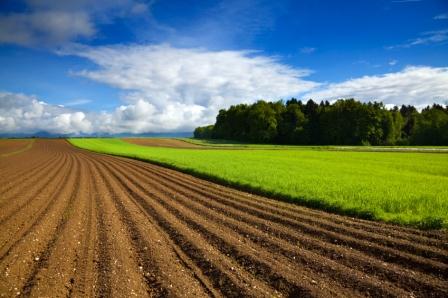The EU starch industry’s contribution to the consultation on Modernising and Simplifying the Common Agriculture Policy
27 April 2017
The EU starch industry processes conventional agricultural raw materials that are almost exclusively grown in the EU. To be competitive, the EU starch industry needs access to a reliable supply of quality raw materials is critical for the stability of starch production on the EU market and to supply ingredients that suit customer and consumer demands.
The EU starch industry adds value to all components of the agricultural raw materials. It manufactures over six hundred products including native starches, modified starches, liquid and solid sweeteners. An integral part of starch manufacture is the production of valuable coproducts such as oils, proteins and fibres. All these starch products are used as ingredients and functional supplements in a vast array of food, feed and industrial applications.
In 2015, from 75 starch production facilities in 20 of the 28 EU Member States, the EU starch industry processed about 23 million tonnes of agricultural raw materials, roughly split between wheat (8 million tonnes), maize (8 million tonnes), and starch potatoes (7 million tonnes) transformed into 11 million tonnes of starch and 5 million tonnes of co-products.
Starch biorefineries efficiently valorise the raw materials, energy and water during the production process, which contributes to the competitiveness of the EU starch industry. In fact, the EU starch industry processes every part of the plant and produces minimal waste; less than 1% is not valorised[1].
With a turnover of 7.9 billion Euros, it also invested about 551 million Euros, of which over 82 million Euros in Research & Development.
Agricultural raw materials of good quality, in sufficient quantities, at a competitive price must be readily available
A strong 1st pillar to secure the production of raw materials. Starch Europe fully supports a strong and common first pillar as the core element of the Common Agriculture Policy (CAP) after 2020 to help create stability of farmers’ income, stability of production in the EU and thereby security of supply of raw materials to the industry.
The stability of farmers’ income. The integration of EU agriculture in a globalised market created uncertainties. Climatic events, change of consumer habits, world market price fluctuations impact the EU market and farmers’ income. The EU starch industry encourages the use of risk management tools, such as futures market for commodities as cereals, the creation of mutual funds for insurance schemes and other tools that facilitate access to finance as these can support farmers, cooperatives and other stakeholders in the supply chain to manage their risk profiles.
Security of supply of agricultural raw materials to the EU starch industry. The market orientation of the CAP contributes to secure the availability and quality of raw materials on the EU market as well as the competitiveness of the EU starch industry. As the EU starch industry sources its raw materials almost exclusively on the EU market, it therefore relies on the supply of these raw materials at a fair market price and constant quality. To valorise the raw materials, the EU starch industry transforms it in a broad range of starch products.
A strong CAP coherent with other EU policies
A strong common budget. Maintaining an appropriate budget is essential to support the competitiveness of the EU agriculture. The CAP must remain a policy common to all Member States that avoids market distortions and secure free circulation of raw materials on the single market.
Fair competition on the EU market. Since the introduction of voluntary coupled support in 2015, five out of ten producing Member States recouple direct payments to the growing of starch potatoes in the EU. Voluntary coupled support for starch potato can be a suitable measure in some Member States, provided that it does not distort competition between economic players across the EU.
Starch Europe believes it is of utmost importance that – in cases where such voluntary coupled support is granted – the applicable conditions are closely scrutinized by the EU Institutions to ensure fair competition across Europe between starch potato farmers, and between the factories they supply their potatoes to.
A level playing field on the global market. The production of starch in the EU is subject to several policies that weight on the production costs. The EU is at the forefront of climate mitigation, food safety, and consumer protection and Starch Europe welcome these initiatives. Nevertheless, these policies create a gap on production costs between EU companies and their competitors in third countries (Emission Trading Scheme - ETS, Effort Sharing Regulation - ESR, Industrial Emissions Directive - IED). Additionally, the multiplication of trade negotiations with third countries creates a cumulative effect of the concessions granted. It impacts the EU starch industry that cannot compete on a level playing field with new EU trade partners benefitting from preferential market access and lower regulatory constraints.
The production and valorisation of sustainable EU raw materials on global markets
Environmental sustainability. Farmers producing raw materials in the EU meet high sustainability requirements, in line with consumers’ demands and environmental challenges. The requirements of cross-compliance and the “greening” of direct payments in the CAP guarantee that EU-grown raw materials comply with high environmental and land management sustainability criteria.
Economic sustainability. The CAP must secure that EU agricultural products, including starch products, are valorised on the global market for their sustainability. Starch Europe highlights that improving sustainability implies adapting production processes and creates additional costs. The sustainability of farming practices, promoted by the current CAP positively differentiates the quality of EU products on the global market. Starch Europe calls for sustainability to be an asset that also secures competitiveness of EU farmers and raw materials processors.
Social sustainability. Plants of the EU starch industry are anchored in rural areas and contribute to its economic dynamism. It is the role of the CAP to secure a decent living to farmers and resilient EU agriculture that keep rural areas attractive. Starch Europe’s members comply with high labour standards as they operate within EU boundaries and comply with the employment and health and safety legislation of the Member States they operate in. Where they are set up as cooperatives, starch operators maintain a close relationship with farmers and support the access to training and knowledge transfer to secure swift adaptation to market changes, and to contribute to the interest for farming activity and encourage generational renewal.
The CAP as an enabler of the bioeconomy, addressing upcoming challenges both at the local and global level
The bioeconomy, a necessary component of the future of the CAP. The CAP should encourage the development of the bioeconomy to the benefit of consumers, the environment and the EU economy in terms of creating jobs and growth. With the bioeconomy, starch products contribute to delivering sustainable solutions to current and future societal challenges that concern all citizens of the Union. The EU starch industry contributes to the EU bioeconomy, which “provides a useful basis for such an approach, as it encompasses the production of renewable biological resources and the conversion of these resources and waste streams into value added products, such as food, feed, bio-based products and bioenergy.”[2] It is already worth €2 trillion annually and employs 22 million Europeans[3], but holds the potential to significantly further boost competitiveness and long-term economic growth. At a time when the pressure is on to deliver on post-Paris climate commitments and UN Sustainable Development Goals, the bioeconomy offers a viable solution to today’s fossil carbon equivalents and has the potential to save up to 2.5 billion tonnes of CO2 per year[4]. The bioeconomy also addresses the challenge of growing population and increased demand of consumers.
Encouraging innovation, and investments in research and development for farmers and the whole value chain. Starch Europe encourages programmes that intend to modernize EU agriculture and farming practices. Digitalisation of farms will improve the sustainability of the activity. It is crucial that the CAP develops synergies at local scale to encourage platforms that allow sharing best practices, promote the investment and use of innovative tools (e.g. precision farming) and exchange on farming techniques (e.g. plant breeding, quality of soils)[5]. These technologies can provide a productivity and economic growth for farmers as well as an increase in environmental sustainability of EU raw materials.

